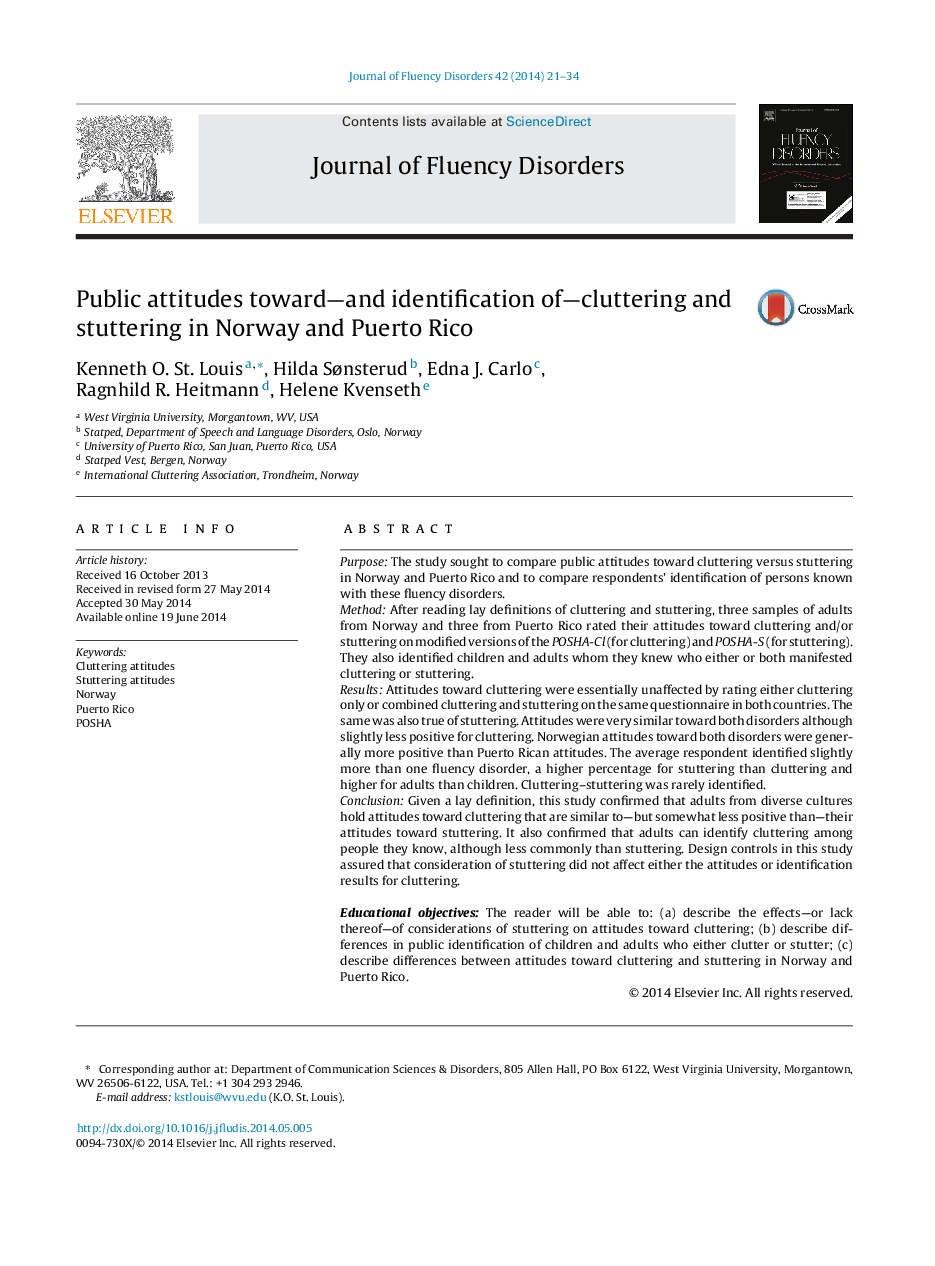| کد مقاله | کد نشریه | سال انتشار | مقاله انگلیسی | نسخه تمام متن |
|---|---|---|---|---|
| 911347 | 1473148 | 2014 | 14 صفحه PDF | دانلود رایگان |
• Public attitudes toward—and identification of—cluttering versus stuttering are compared in Norway and Puerto Rico.
• Adults rated their attitudes toward cluttering and/or stuttering on modified versions of the POSHA-S, the POSHA-Cl, or both.
• Attitudes were slightly worse for cluttering but essentially unaffected by consideration of stuttering in both countries.
• Adults from both countries identified children and adults whom they knew who either or both manifested cluttered or stuttered.
• Norwegian attitudes toward cluttering and stuttering were generally more positive than Puerto Rican attitudes.
PurposeThe study sought to compare public attitudes toward cluttering versus stuttering in Norway and Puerto Rico and to compare respondents’ identification of persons known with these fluency disorders.MethodAfter reading lay definitions of cluttering and stuttering, three samples of adults from Norway and three from Puerto Rico rated their attitudes toward cluttering and/or stuttering on modified versions of the POSHA-Cl (for cluttering) and POSHA-S (for stuttering). They also identified children and adults whom they knew who either or both manifested cluttering or stuttering.ResultsAttitudes toward cluttering were essentially unaffected by rating either cluttering only or combined cluttering and stuttering on the same questionnaire in both countries. The same was also true of stuttering. Attitudes were very similar toward both disorders although slightly less positive for cluttering. Norwegian attitudes toward both disorders were generally more positive than Puerto Rican attitudes. The average respondent identified slightly more than one fluency disorder, a higher percentage for stuttering than cluttering and higher for adults than children. Cluttering–stuttering was rarely identified.ConclusionGiven a lay definition, this study confirmed that adults from diverse cultures hold attitudes toward cluttering that are similar to—but somewhat less positive than—their attitudes toward stuttering. It also confirmed that adults can identify cluttering among people they know, although less commonly than stuttering. Design controls in this study assured that consideration of stuttering did not affect either the attitudes or identification results for cluttering.Educational objectives: The reader will be able to: (a) describe the effects—or lack thereof—of considerations of stuttering on attitudes toward cluttering; (b) describe differences in public identification of children and adults who either clutter or stutter; (c) describe differences between attitudes toward cluttering and stuttering in Norway and Puerto Rico.
Journal: Journal of Fluency Disorders - Volume 42, December 2014, Pages 21–34
